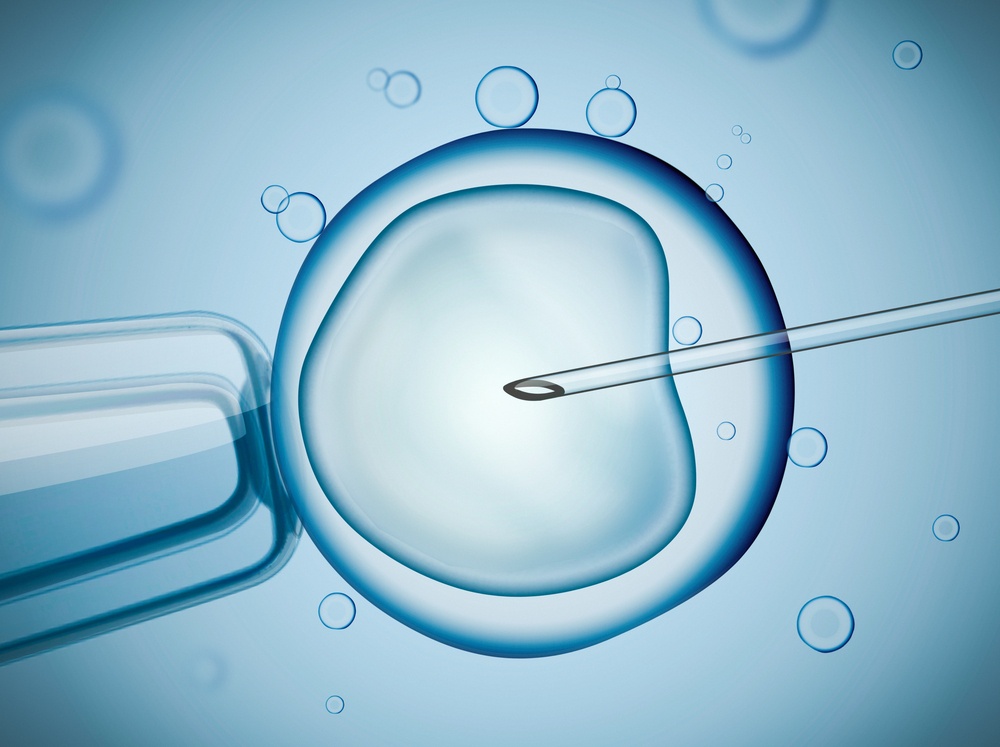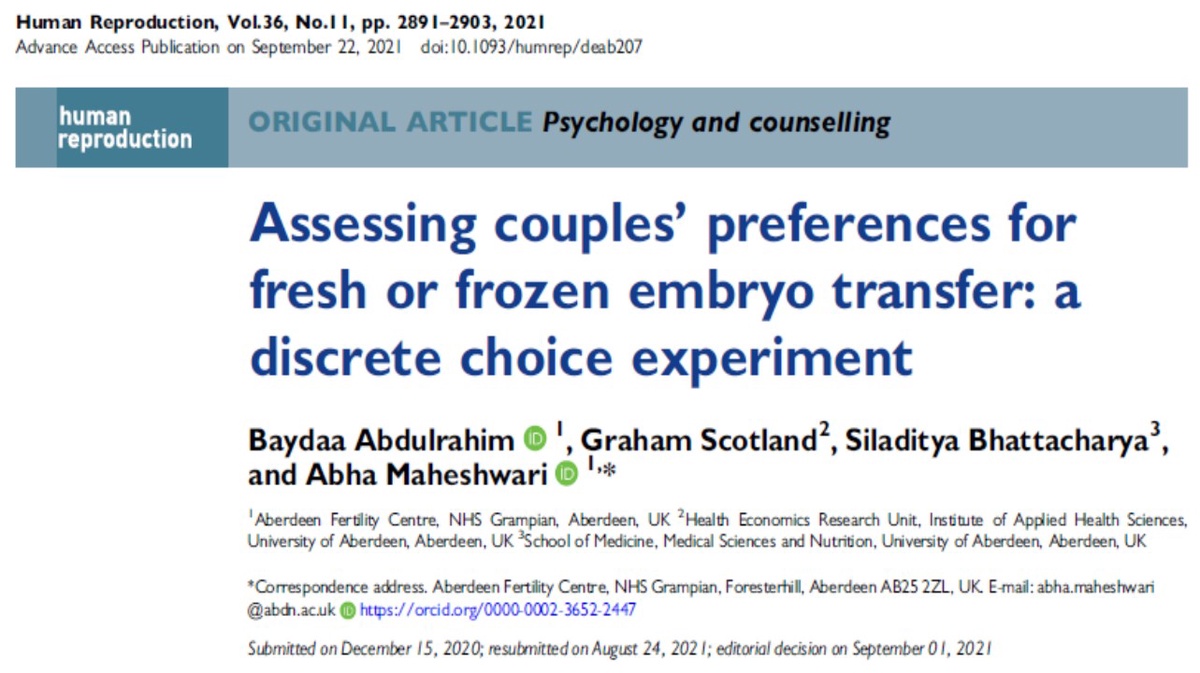
The European Society of Human Reproduction and Embryology (ESHRE) recently chose a HERU co-authored journal article for their monthly journal club discussion on Twitter.
The article they chose was a study from the ESHRE journal ‘Human Reproduction’. The article is on ‘Assessing couples’ preferences for fresh or frozen embryo transfer: a discrete choice experiment’. The authors are from the University of Aberdeen and the Aberdeen Fertility Centre at NHS Grampian and include HERU’s Graham Scotland. The lead author, Miss Abdulrahim, undertook an MSc at the University of Aberdeen during her specialist training which was supervised by the co-authors. The article is based on this research.
What was investigated and why?
In vitro fertilisation (IVF) is one of several techniques available to help people with fertility problems have a baby. During IVF eggs are removed from the woman’s ovaries and mixed with sperm in a laboratory to create embryos. Traditionally, the best embryo is then selected and placed in the woman’s womb (Fresh embryo transfer). Good quality spare embryos are frozen for future use.
More often clinics are choosing to freeze all embryos before then thawing them and placing them in womb (frozen embryo transfer). Initial studies suggested an advantage to this approach. Later studies have shown potential advantages and disadvantages to both approaches. Given the potential trade-offs, this study aimed to assess couples’ preferences for the different approaches and outcomes.
How it was investigated?
A discrete choice experiment (DCE) was used to explore the preferences of a selection of couples attending the Aberdeen Fertility Centre. A DCE is a survey method where people are asked to make choices between alternative options that vary on several attributes. In this way, what people value and their preferences can be identified. There is more information on DCEs in our HERU Explains…DCEs video.
What did we find out?
The results of the DCE study suggest that couples who are seeking care for infertility have a strong preference for IVF treatment over no treatment. However, participants did not express a significant preference for either embryo transfer approach over the other. Their choices between the embryo transfer options were driven more by the assigned chances of success (live birth rate) and risks of miscarriage and neonatal complications. There were some differences on how different groups balanced these attributes. For example, there is a suggestion that older couples placed less importance on avoiding neonatal complications, whereas male partners placed greater value on this.
What was recommended?
The groups in the study had different views on what factors were most important. Also, different groups can face different chances of success and risks. Therefore, the authors recommend individualised care in IVF treatment. This should take patient preferences into consideration. They also suggest the development of a risk assessment tool to guide decisions. This is considered preferable to a policy of freezing all embryos for all.
The Journal Club discussion
The ESHRE journal club takes place on Twitter. Each month an article is selected from the Society journal and pre-defined questions are used to encourage discussion. The #ESHREjc hashtag is used to group the posts.
The Twitter discussion on the article went into some detail on the different preferences and how clinicians should discuss these preferences and incorporate them into treatment decisions.
The journal club gathered the different threads together and give a visual summary of the discussion.
This Twitter post from one of the journal club editors gives a route into the discussions.
Journal article
Abdulrahim, B., Scotland, G., Bhattacharya, S. and Maheshwari, A. (2021) 'Assessing couples’ preferences for fresh or frozen embryo transfer: a discrete choice experiment', Human Reproduction, [Epub ahead of print].

Thanks to Dr Abha Maheshwari of Aberdeen Fertility Centre at NHS Grampian and Dr Graham Scotland of HERU for their help compiling this blog post.
HERU is supported by the Chief Scientist Office (CSO) of the Scottish Government Health and Social Care Directorates (SGHSC). The views expressed here are those of the Unit and not necessarily those of the CSO.


